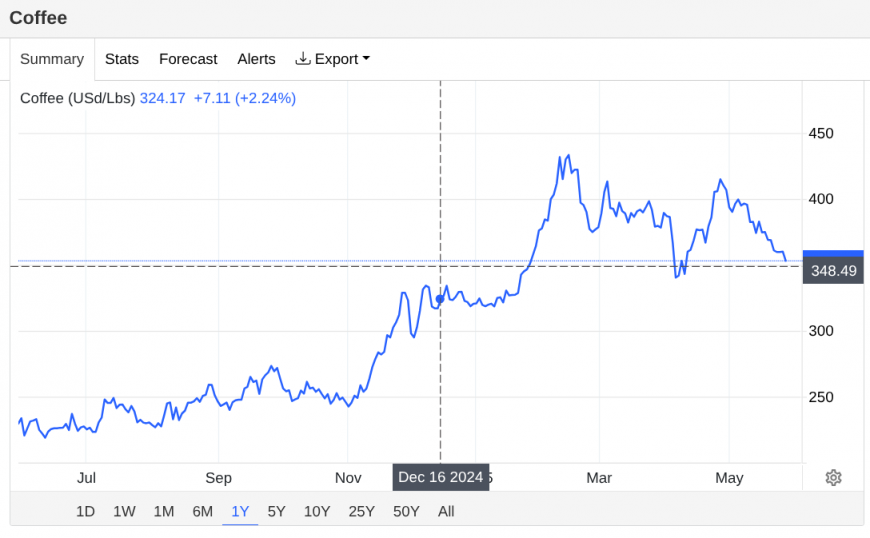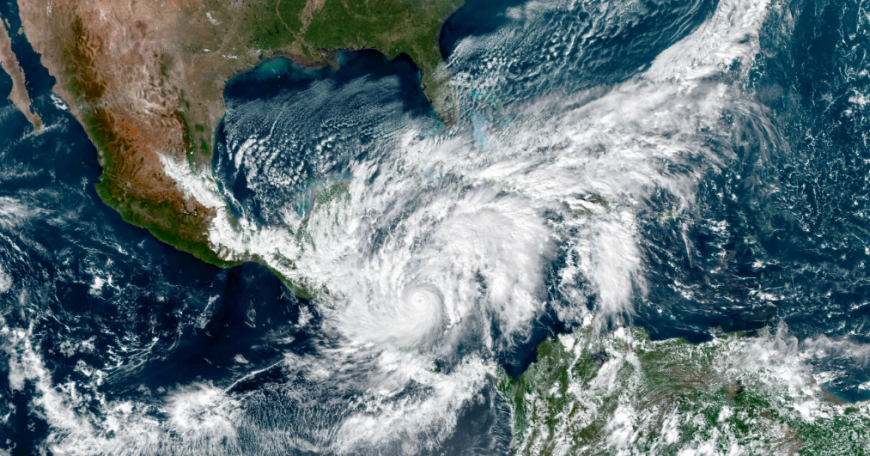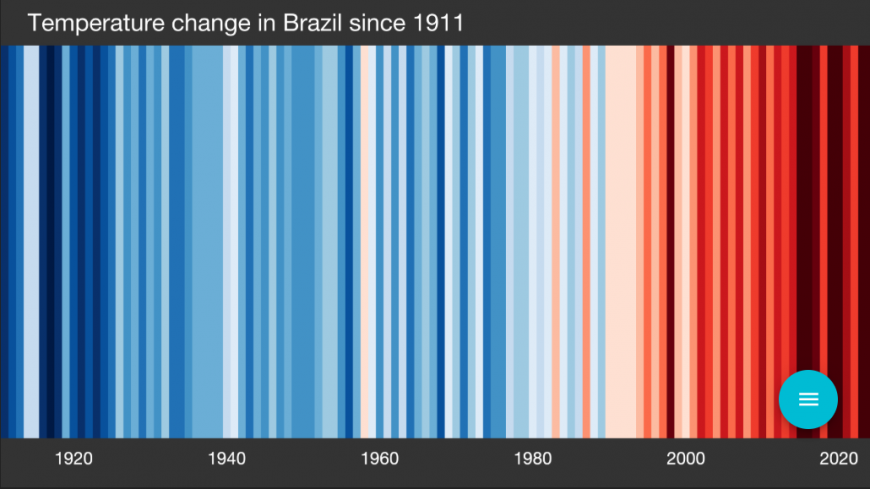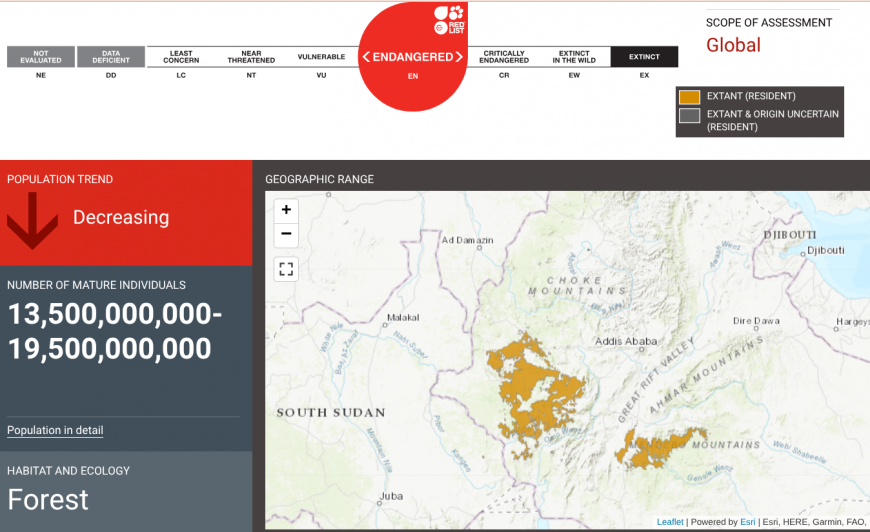
Coffee prices reached an all-time high early in 2025. Climate change is impacting the growing regions of the world as supply continues to outweigh demand.
For many people, a satisfying cup of coffee with its caffeine hit is a vital part of their daily routine. Whether at home, on the way to work or a social mid-morning break, drinking coffee is an everyday occurrence. It’s a key part of society in many countries, but in February 2025, coffee prices reached an incredible market high at above $4 per pound. Sifting through political trade tensions, labour costs and profit margins of coffee shop chains and importers, it is climate change that is causing a crisis. Recent weather events in South America and southeastern Asia added strain to the coffee production market in 2024 but there is an ongoing problem for coffee-growing countries due to our changing global climate. Without adaption, drinking good quality coffee could become similar to fine wines or sipping champagne. Reserved for special occasions.

As crops fail and supply is restricted, inventories are used up as prices rise. The production end of the industry has already begun to adapt to new varieties and technologies where financial investment is available but many growers operate on a small scale.
“Coffee is also an important crop for smallholder farmers around the globe. Around 60% of coffee worldwide is produced on farms covering less than five hectares” Carbon Brief
Coffee is one of the world’s most traded commodities, worth about $31bn per year. It moves as a seasonal crop with some leeway when inventories are well stocked. This commodity is big business but the coffee tree is a sensitive plant and is not reacting well to the temperature increases and variations in rainfall. All leading to shrinkage in suitable areas for the crop to grow

Coffee-growing countries circle the world in a ‘Coffee Belt’. They are tropical regions that suit the plants. They are acclimatised to specific conditions. There has to be sufficient, reliable rain with distinct dry seasons. Fertile soil is needed to support the plants and the quality of the coffee beans. There has to be sunshine but not too much and they don’t like things too hot or too cold. Higher altitudes allow the plant to thrive but with less oxygen, the development of the coffee fruit (cherry) is slower. This longer maturing allows more complex sugars and flavours resulting in better quality coffee.

All crop growers worry about intense rainfall and hail damaging their plants. Hurricanes are a concern for Central American growers as are typhoons for places like Vietnam. There is the physical damage and potential loss of fruit but also the disruption afterwards to the supply chain. Extreme rainfall and flooding can cause soil erosion, and disrupt water supplies and irrigation infrastructure. Too much rain can lead to fungal diseases thriving, such as coffee leaf rust and cherry rot. Any farmer will have to live with the ups and downs of weather impacts on their land but for the specific coffee regions, there are now longer-term worrying shifts.
Brazil is recovering from one of its worst droughts on record affecting the Arabica crop. This followed Vietnam's poor harvest due to dryness in the growing period but heavy rain at harvest time. Robusta was already in short supply. Coffee prices rocketed and Brazilian farmers cashed in most of their Arabica inventory in 2024 so stockpiles were used up as heat affected their growing crop. By February 2025 the global prices had passed the previous (1977) record level and surged past $4/lb. With many of the inventories used up or allocated, the industry is awaiting the next harvest in May/June.
These plants grow well in certain temperature ranges. Different varieties are acclimatised to these conditions. The range differs between Arabica and Robusta. Arabica beans are mellower tasting (70% of the market) and grow at higher altitudes in cooler climes. Robusta has a more bitter taste and is stronger, with more caffeine. This grows in warmer, wetter climes at lower altitudes. If it becomes too hot the plants will struggle to grow or produce fruit, the beans. The changes are more than a hot or cold season here and there. It is a trend for the regional conditions. The IPCC commented on the shrinking of suitable coffee-growing land, with concerns about areas becoming unusable. The higher temperatures can accelerate the metabolism and growth rate of the coffee plants. This shortens the maturation period of the important coffee cherry as it develops the flavours. In times of heat, there will be increased evapotranspiration and the likelihood of drought. This causes the plants to be stressed and they become more susceptible to disease. The market seeks high-quality beans, Stress can alter the chemical makeup changing the flavour, aroma and acidity.
Climate change is bringing changes to the seasonal rain patterns. Traditional coffee-growing regions are seeing more intense rainfall or disruption to the usual wet and then dry seasons. The coffee trees like a predictable amount of rainfall and a good amount, but not too much. Dehydration affects the growth of the trees and they can wither. Some regions still rely on natural downpours rather than irrigation. Disease can increase when conditions are warm and damp leading to significant yield loss. Production costs increase and more management is needed, if the region wants to keep producing.
For smallholders and some countries, there is little choice. This is the industry that supports their family, a cash crop for their survival or else it is migration to an urban area. The thought of losing the coffee growing industry would be economically devastating in parts of the world. That is the reality of our changing climate. The world will be different.
The process of seed to coffee cup has many steps. The coffee seeds are planted, the seedlings transplanted and over a few years they grow to shrub-like trees and bear fruit, the coffee cherry. Then it is harvested. All of this part of growing is vulnerable to weather events and being affected by longer-term climate changes. Coffee flowering is triggered by the first rainfalls, traditionally as the rainy season begins. Erratic rainfall interferes, if it fades or if it is too intense. The coffee flowers and the fruits may drop off the tree resulting in lower yields, smaller beans and lower quality. Harvest is an expensive time so if the flowering and ripening are out of sync, this could raise the overall costs if additional harvesting needs to take place. Next comes processing , drying, grading export before shipping and roasting which are impacted by other factors locally and globally. Any disruption here also can affect supply and add to price volatility.

In Latin America, the warmer climate and altered rainfall patterns are affecting the flower and fruit development. In Brazil, the wide plains make certain aspects of farming easier than in mountainous regions, such as transportation and irrigation. The Arabica crop likes some shade in the humid tropical areas to allow its beans to develop its sort-after mild taste. Frosts can be devastating at the wrong time (as happened in the 1980s), as can strong winds. Suitable growing areas are shrinking. In Colombia, pests are increasing as the temperatures rise. There have been attempts to head for higher altitudes where the air is cooler but that means heading into mountainous terrain leading to infrastructure difficulties. Usually, there is one major harvest per year but Colombia has managed two with more consistent weather patterns, so far. Costa Rica, El Salvador, and Nicaragua are all likely to see significant drops in land areas suitable for coffee.
IPCC sixth assessment report “ Central and South America are highly exposed, vulnerable and strongly impacted by climate change, a situation amplified by inequality, poverty, population growth and high population density, land use change particularly deforestation with the consequent biodiversity loss, soil degradation, and high dependence of national and local economies on natural resources for the production of commodities”
In SE Asia, there are also changing weather patterns with increased rainfall and temperatures. Pests are affecting the Robusta crops here and as the rainy season varies, it affects the cultivation and harvesting times. Quality decreases and yields fall. Vietnam saw heat and drought in May 2024.
In Africa, the origin of Arabica is in Ethiopia and a small part of South Sudan[see below]. Wild Arabica could become extinct when it is needed to create new varieties. This is the main store of genetic resources of Arabica. Here there have been erratic rains and higher temperatures.

Drought often complicates the coffee process and severely impacts the area available for coffee growing and so the market. Currently, the outlook is gloomy. As total coffee supply decreases as we lose growing regions and crops suffer, there is market instability and price volatility. This adds to local pressures for smallholders but also on countries who rely on the exports. Economic and even social unrest can follow.
The Coffee Berry Borer or Coffee Borer Beetle (CBB) is an insect that can cause huge damage to a coffee crop. This pest exists anyway but it is sensitive to humidity. In times of drought, it will retreat but waits to emerge. When the rains do reappear so will the insects. Higher temperatures seem to encourage the CBB, up to a certain limit. As our climate warms, this destructive pest flourishes.
We are drinking more coffee than we are producing by using up stockpiles. The supply has dwindled due to poor crops with concerns about falling quality.
There are scientific developments in drought-resistant coffee varieties. These plants can handle the heat and unpredictable rains. There is also the need for resistance to disease and pests. Technology is improving farming practices such as irrigation, reducing the water needed and focusing on crop fertiliser management. There is agroforestry where trees are grown alongside the coffee plants, offering shade, to reduce erosion and looking to improve the health of the soil. This protects the crop and improves the quality of the end product. Also soil conversation techniques.

The technology takes money, which large companies are willing to invest. The many smallholders need protection and representation in this time of adaptation. There needs to be further supply chain collaboration such as The International Coffee Organization. The ICO brings together exporting and importing Governments. It works with UN organisations and currently represents 93% of world coffee production and 63% of world consumption.
UNIDO “Coffee farmers often struggle to make a decent living due to volatile market conditions, the impacts of climate change on agriculture, as well as the need to respond to growing consumers’ demand for sustainability.”
There can be difficulties for smallholders to respond as they try to survive. Seemingly worthy processes to more wealthy nations, such as the EUDeforestation Regulation (EUDR looking for geodata of where the crop has been grown), present issues for smallholders in Uganda who don’t have the tech to provide this. Adaptations might be the right thing but for those farmers where this is a cash crop, this will all take time. And these smallholders are a very important part of the global industry. If their crop ceases to be sustainable people might just stop and migrate. Coffee-growing countries can see their national economy affected if coffee is perhaps their most significant export commodity. It can also lead to social unrest. There is a need to diversify, away from the dependency on coffee but that is difficult and costly.
Alternative varieties are trying to reach into the market, such as Excelsa. Marketing from ExcelsaCoffee.com “A sip of climate resilient and lower-caff Excelsa is a moment of presence and a ritual of awareness in your day.”
“Try Pesticide-Free Excelsa. Excelsa is its own independent coffee bean. It is naturally lower-caff. Tart and Fruity. And never Bitter. This product is a seasonal blend of our favourite Excelsa and is 100% pure. Current blend is 50% Vietnam and 50% Philippines Excelsa.”
Being “climate resistant” relates to characteristics of being drought resistant and a low intervention crop. It has a deep rooting system which helps as the surface soil dries out and thicker leaves are said to have “lower transpiration losses”
Robusta and Arabica still dominate the global coffee market. There is the West African Liberica, a rare species of coffee which is much sweeter. This is unaffected by coffee rust which has been impacting Central America and it is highly resistant to worms. It has been grown as a sacrifice tree with more popular coffees as it is very attractive to the CBB. The trees grow large but with a smaller yield. It's very different, sweet taste is the main obstacle.
Demand outweighs supply. The market in China is growing, now not solely of tea but seeing a huge uptake in coffee culture. Young people in the West are also beginning to drink coffee earlier, in various guises. Not at 18 or 19 years old for a lifetime of coffee drinking but iced coffee and flavoured latte choices aged 15 or 16. American tariffs won’t be helping the market confidence either, such as those for Vietnam, the main Robusta producer in the world.
The past two years have been a challenging time for the global coffee market. There have been adverse weather events in the world’s two largest coffee-producing nations; Brazil and Vietnam. This is set against a worrying trend of climate change where temperatures are rising, rainfall patterns are being disrupted and more extreme rainfall episodes are expected along with the risk of times of drought. The recent market high prices are now stabilizing as the next harvest begins but consumers have to expect to pay higher prices in the shops for their coffee. Stock levels are still low so if further bad weather occurs there is little resilience at this time. The whole industry remains vulnerable to the changes in climate that are occurring now.
Loading recent activity...